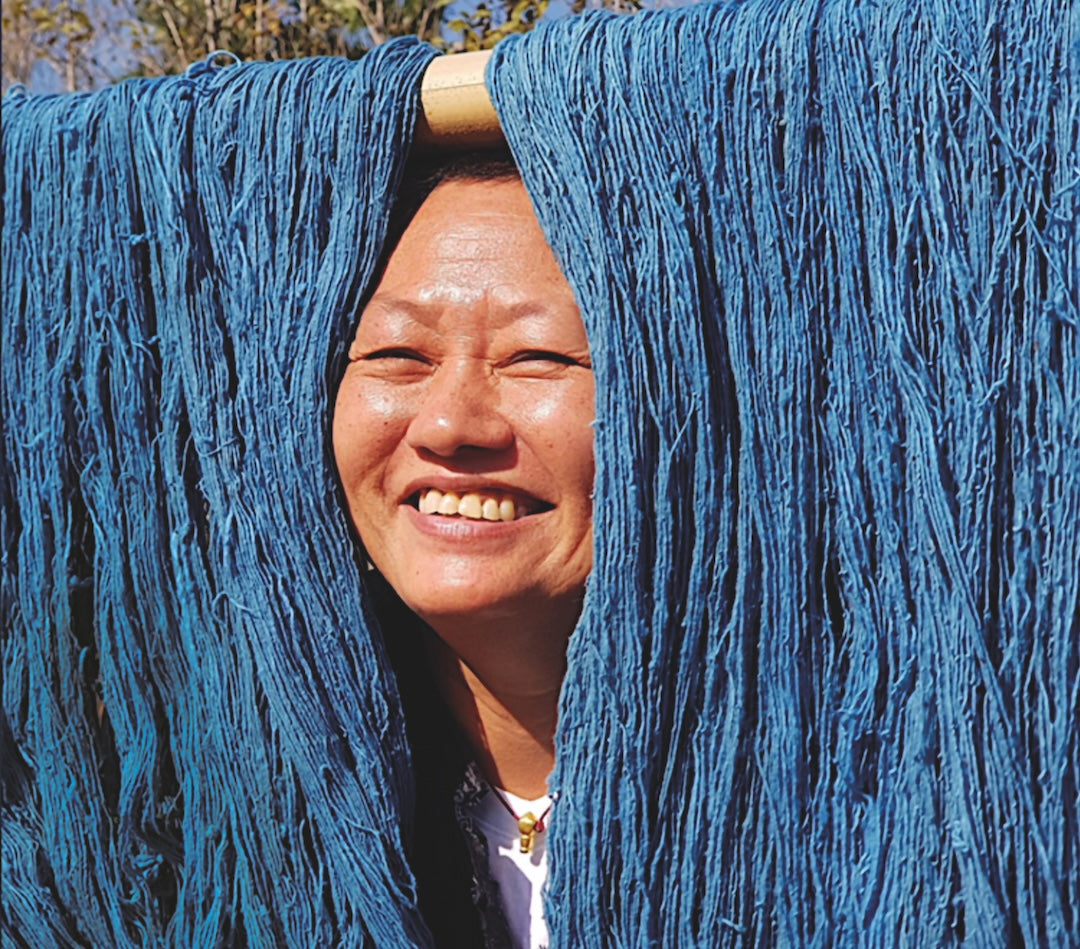
International Folk Art Market 2024
This year, 11- 14 July the International Folk Art Market (IFAM) celebrates its 20th anniversary in Santa Fe, New Mexico. Of the market’s 167 global artists who juried into this summer’s market, 81 identify under the textile category-- by far the largest represented category. Subcategories under the textile category include apparel, textiles for the home, and rugs.

Image: Mbili Fashion batik textile. Image above: IFAM textile artist, Somporn Intaraprayong, Thailand IFAM2023 © GabriellaMarks.
Mbili Fashion: Lagos, Nigeria
@mbilifashion
Ifeoma Nnewuihe is the visionary behind Mbili Fashion which is innovating traditional Nigerian adire batik textiles. Her process begins with creating digital designs, shared with textile artists who then contribute to the fabric-making process. The creation of each fabric, through batik wax resist dyeing known as adire, spans ten days to three weeks, ensuring meticulous hand-drawn details, colour saturation, air-drying, and revisions. Read more about the History of African Wax Print, here.
Want to read more of this article?
We are proud to be a subscriber-funded publication with members in 185 countries. We know our readership is passionate about textiles, so we invite you to help us preserve and promote the stories, memories, and histories that fabric holds. Your support allows us to publish our magazine, and also ‘what's on’ information, and subscription interviews, reviews, and long-read articles in our online blog.
ALREADY A SUBSCRIBER? CLICK HERE TO ACCESS CONTENT

Image: Mbili Fashion batik textile. Image above: IFAM textile artist, Somporn Intaraprayong, Thailand IFAM2023 © GabriellaMarks.
Mbili Fashion: Lagos, Nigeria
@mbilifashion
Ifeoma Nnewuihe is the visionary behind Mbili Fashion which is innovating traditional Nigerian adire batik textiles. Her process begins with creating digital designs, shared with textile artists who then contribute to the fabric-making process. The creation of each fabric, through batik wax resist dyeing known as adire, spans ten days to three weeks, ensuring meticulous hand-drawn details, colour saturation, air-drying, and revisions. Read more about the History of African Wax Print, here.
Want to read more of this article?
We are proud to be a subscriber-funded publication with members in 185 countries. We know our readership is passionate about textiles, so we invite you to help us preserve and promote the stories, memories, and histories that fabric holds. Your support allows us to publish our magazine, and also ‘what's on’ information, and subscription interviews, reviews, and long-read articles in our online blog.
ALREADY A SUBSCRIBER? CLICK HERE TO ACCESS CONTENT

